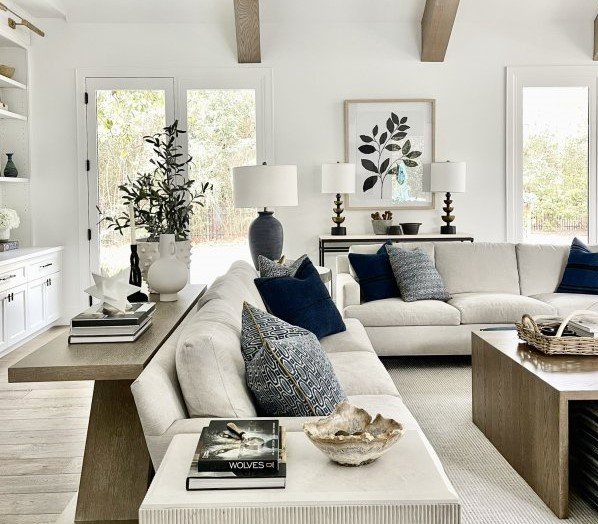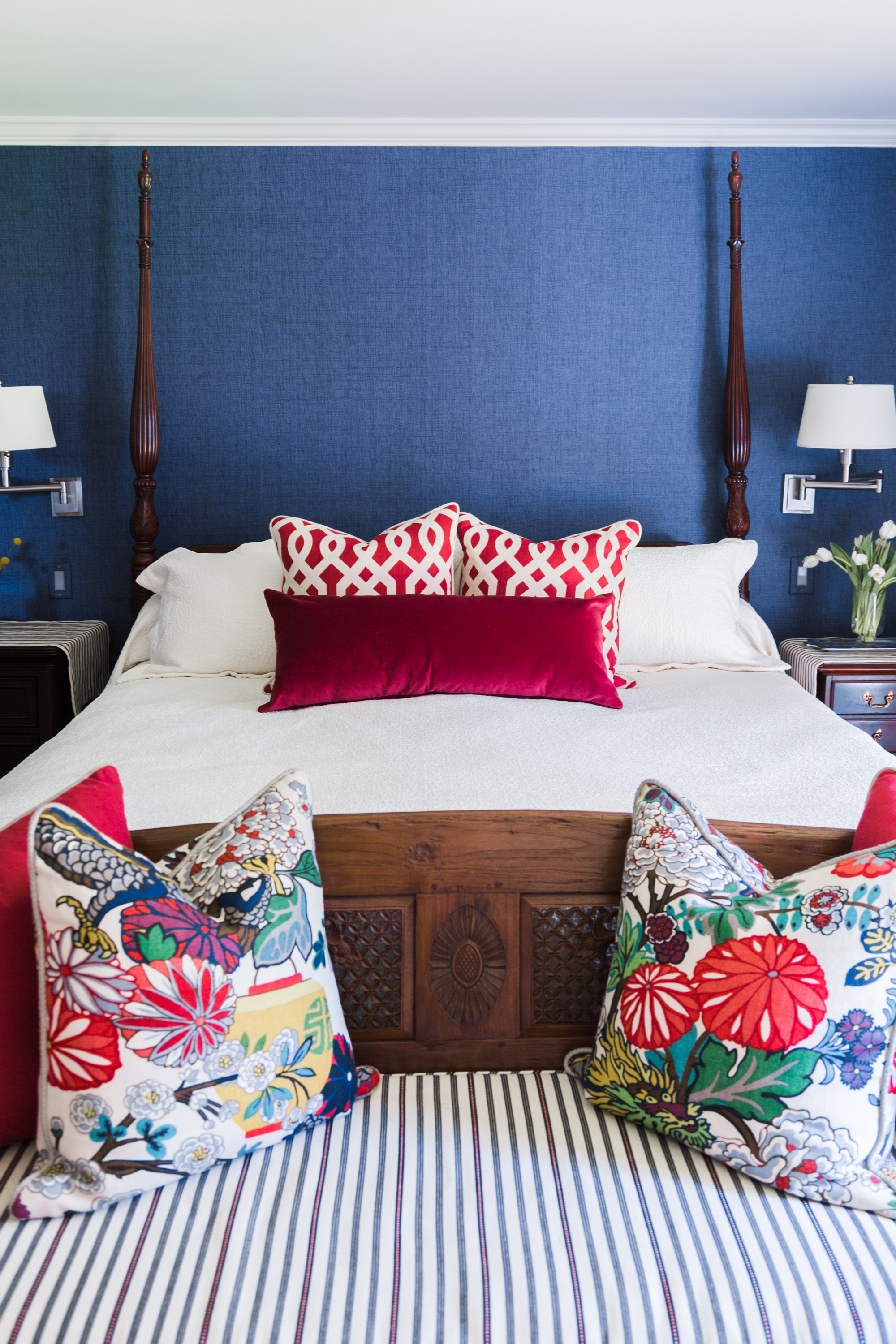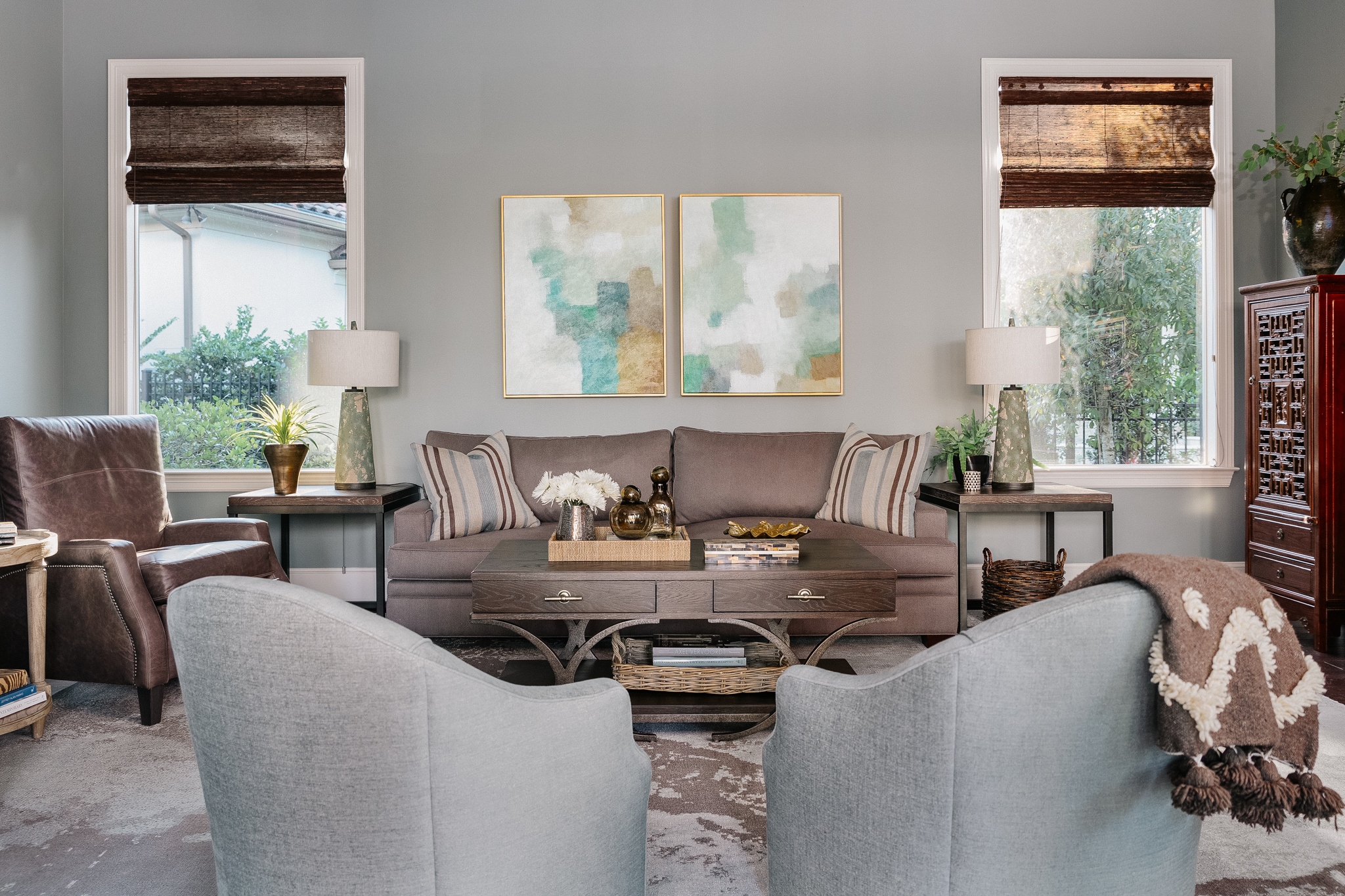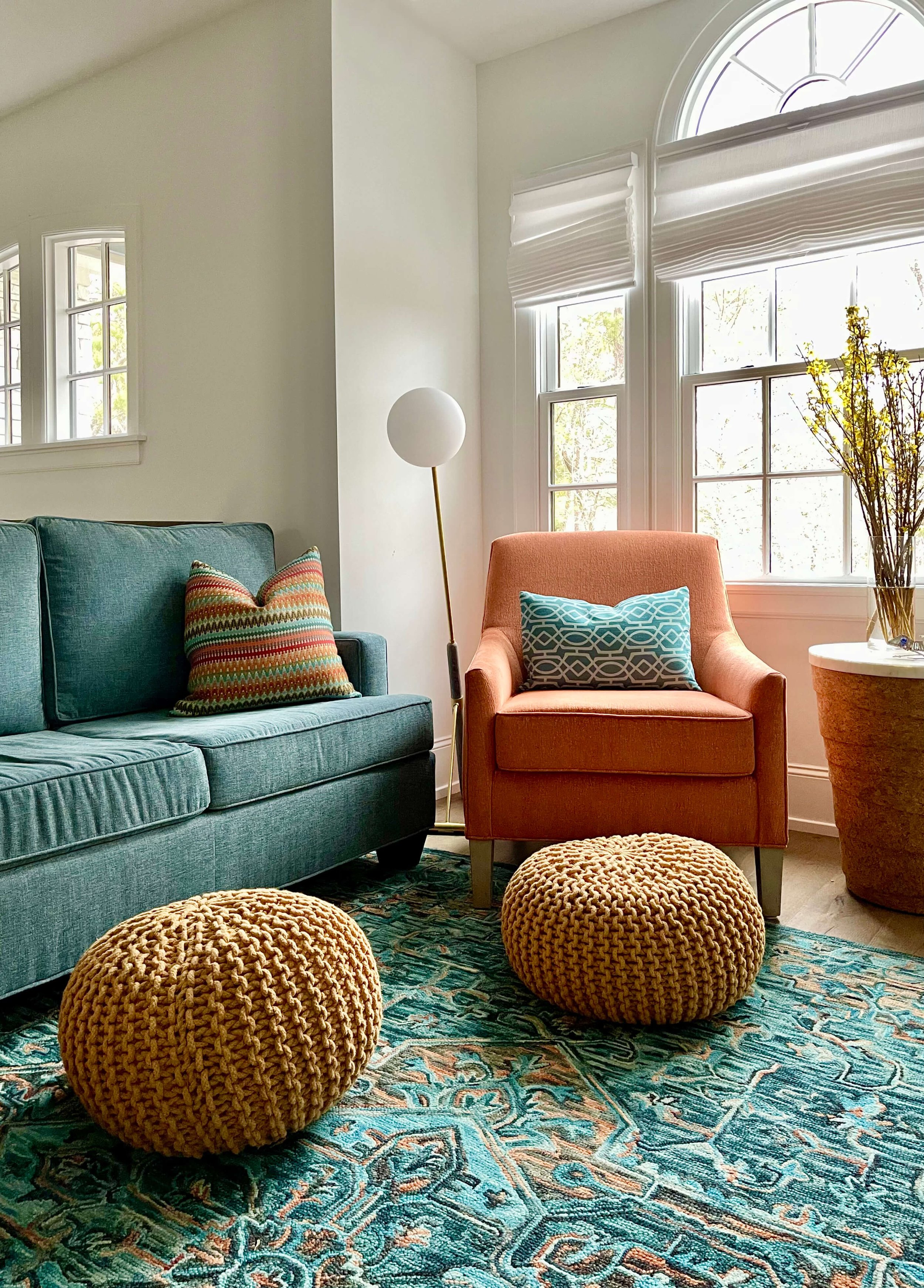“Regarding your question about pillows...
...I don’t think I’ve ever designed a room of furnishings without them. As a matter of fact, I can sometimes design a room around just the pillows. I think it's a great way to soften a space, as well as add more expensive fabrics and pattern without going overboard.”
That was my answer to a question a reader of my blog sent me about pillows and their importance to the design of a room.
My blog contains affiliate links. Any purchases, at no additional charge to you, render me a small percentage, are most appreciated and make this blog possible. :-)
Custom pillows for bedroom designed by Carla Aston.
It’s not that pillows are really that important, it’s just that using them to introduce some color and pattern in small doses is really what makes their use a vital part of the design of the room.
When you only need a few yards of fabric to create a significant statement in a room, pillows are...
The perfect place to invest or splurge.
The perfect place to contrast or introduce color.
The perfect place to bring in a pattern that might, when used in a large dose, would dominate the room.
Custom pillows for this sofa add bold pattern and color. Designer: Carla Aston
So how can a room be designed around the pillows? Well...
Oftentimes, when we start a design plan we begin with the patterned / colorful fabrics first.
Those are the ones that will telegraph the style and contain the palette we will work with. The rest of the project is then filled out with solids, textures, and, perhaps, some supporting patterns.
PATTERN & FABRIC LAYOUTS: Carla Aston
For example...
Let’s say we’ve established we want to go with a gray neutral and then, maybe, some black; and the client likes turquoise as an accent color and wants to use it in their living room.
First, we’ll look for patterns with one, or maybe two or three, of these colors in a pattern that makes the style statement we’re looking for. (That’s actually quite narrowed down if you consider things like types of pattern. A large-scaled chevron might not be appropriate for someone with more traditional taste, etc.)
These are also the fabrics that tend to be the most expensive, so using them in small doses is, many times, most desirable for the budget.
Next - Once the primary, patterned fabric(s) is/are selected, then solids and textures are added in. There are significantly more of those out there to choose from than the first ones we looked for; that’s why they are done next.
Selecting wood tones and other hard materials are also factored in.
Last - And finally, at the end, you have your paint colors! You do this step last on a job because there are an infinite number of possibilities available in every hue. You start with the items in the room that present you with the least number of options and build out from there.
So, as a result of how a design plan is built — from the product with the least number of selections available to the type of product that has the most — can you see how the nature of pillows, just needing a small amount of fabric — perhaps the most expensive patterned, colorful fabric — might be the first thing selected in a room?
Custom pillows for this sofa add bold pattern and color. Designer: Carla Aston
(And, btw, can you also see how a designer can be heartbroken if the client decides to go with everything in the design plan, but decides to find pillows on their own??? :-)
These pretty pillows make the room!
Let’s take a look at some examples of rooms that seem to have been designed around a pillow, as well as rooms that would have a totally different look without them.
Master bedroom with custom pillows that add pattern and interest to this space. | Interior Designer: Carla Aston
Family room with red patterned decorative pillows on a navy sofa add color and life to the room. | Interior Designer: Carla Aston
The pillows in this room tie the color scheme all together | Interior Designer: Carla Aston
Orange pillows and accessories add some life to this gray sofa. Carla Aston, Designer
These custom pillows on the colorful upholstery, add some pattern and help tie the palette to the rug. | Interior Designer: Carla Aston
Living room with soft blue grays, creamy whites and bright yellow accented in custom pillows. | Interior Designer: Carla Aston
The pillow mix on this girl’s room daybed was intentional. Carla Aston, Designer
Shop For Pillows!
I’ve got some gorgeous pillows you can shop yourself, grouped by colorway, below. Have fun!
Bold Blue
Gray
Black and White
Warm Neutrals
Lumbar
This blogpost was thoughtfully written by me, Carla Aston, and not by AI, ghostwriters, or guest posters.















